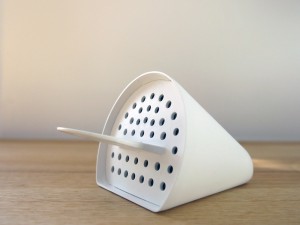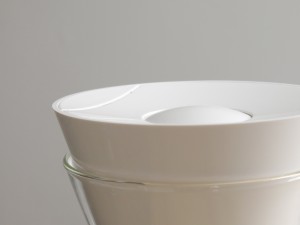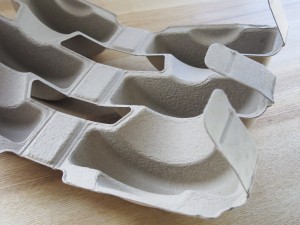It’s Not Easy Buying Green
Posted on December 12, 2013 | posted by:
Exactly one year ago (no kidding, to this exact day), I backed a Kickstarter campaign. It was my first time participating in a crowdfunding project. Kickstarter and other crowdfunding sites are certainly old news at this point and many of my family members and peers have backed countless campaigns by now, but for me, the move was a little out of character. To avoid the packing materials and fuel required to deliver goods to my doorstep, I try to avoid purchasing things that must be shipped. I also try to be diligent in researching where and how the components of the products I consume are sourced and manufactured. But when an internet friend of mine, who’s work and lifestyle I admire from afar through his social media postings, shared a link with me for the Soma water filter Kickstarter page, I was immediately intrigued. A strong concept, slick video, and the fact that the product was the reward for one of the contribution options sealed the deal for me. I pledged $50 and became one of 2,316 to fund the first round of production.
Soma was created by a small team of water drinkers who recognized a need for a better functioning, more sustainable carafe water filter that could replace the Brita-type plastic filters we are all familiar with. I was drawn to the prototype because of the glass carafe (more and more research suggests that plastic packages and containers leach hormone-disrupting chemicals into our water and food) and the compostable water filter, which uses burnt coconut shell carbon instead of the plastic resin used in other disposable filters. With a Soma, perhaps I could finally bury my dirty secret that for years while living in RI I had been driving my car to nearby kiosks a couple times a month to fill up 5-gallon jugs with spring water that was trucked in from out of state. Moving to New York, there would be no such kiosks and no such car.
In the months that followed the successful funding of the project, the Soma team sent out emails to it’s backers sending updates on the manufacturing progress, but also asking us to participate in making decisions about the development of the product. Backers could share comments or vote on design elements. When the product did not arrive in it’s estimated delivery month, or the month after that, or the month after that, I wasn’t upset. I felt informed about the status, involved in codesigning something great, and proud to support a small startup. Bruce Nussbaum points to a general shift toward the blurring of economic roles in a chapter of his book Creative Intelligence. He writes, “People belong to a large and growing number of real and digital communities and play a vast number of roles: consumers, investors, designers, cocreators, makers, thinkers, and collaborators. Significant economic value is generated as a result of the engagements people have within these social networks.” [1]
Since my Soma finally arrived in October, I’ve really enjoyed using it. As water filters go, I do think it’s quite attractive. I really appreciate the thoughtful minimal package/shipping material design too. It functions well in that it’s easy to grip and pour and refill, though I do wish the reservoir were bigger so that I didn’t have to refill it quite so frequently. Though my boyfriend and I both failed the unfiltered and Soma filtered taste-test, I am still leaning toward the belief that our filtered water is cleaner than that which flows straight from the tap. The New York City 2012 Drinking Water Supply and Quality Report states that the water supplied to the city has been treated and cleaned of most microbial contaminants, inorganic contaminants, pesticides and herbicides, organic chemical contaminants, and radioactive contaminants. But it also notes that there are no controls in place on what the drinking water picks up from service lines and internal plumbing. As a renter, it’s very difficult to know about the state of the pipes that carry water from under the street up to your faucet.

But as I go through the, pouring, filtering, and drinking motions everyday and I consider how quickly two months (the recommended amount of time to use each filter before disposing of it in a commercial composting receptacle) has flown by, I can’t help but question this whole gig. Does my burnt coconut and vegan silk filter really offer protection from harmful contaminants? And how much waste am I contributing to the world by opting into the carafe filter system. Hoping to find out more about where and how each component of my Soma is made, I reached out to the company for some specifics on several occasions but have not heard back. Where are you Soma team? And what the eff is this vegan silk?
The world is full of design solutions. And it’s easy to get excited when well-intending products come along purporting to help well-intending consumers live better and lighter on the planet, especially when they’re brought to us by a small business or startup. It seems that perhaps the most important but also most challenging question for conscientious producers and consumers to answer is when and where it is appropriate to implement a design solution?
[1]Nussbaum, Bruce. “Indie Capitalism.” Creative Intelligence: Harnessing the Power to Create, Connect, and Inspire. New York: HarperBusiness, 2013. 241. Print.

